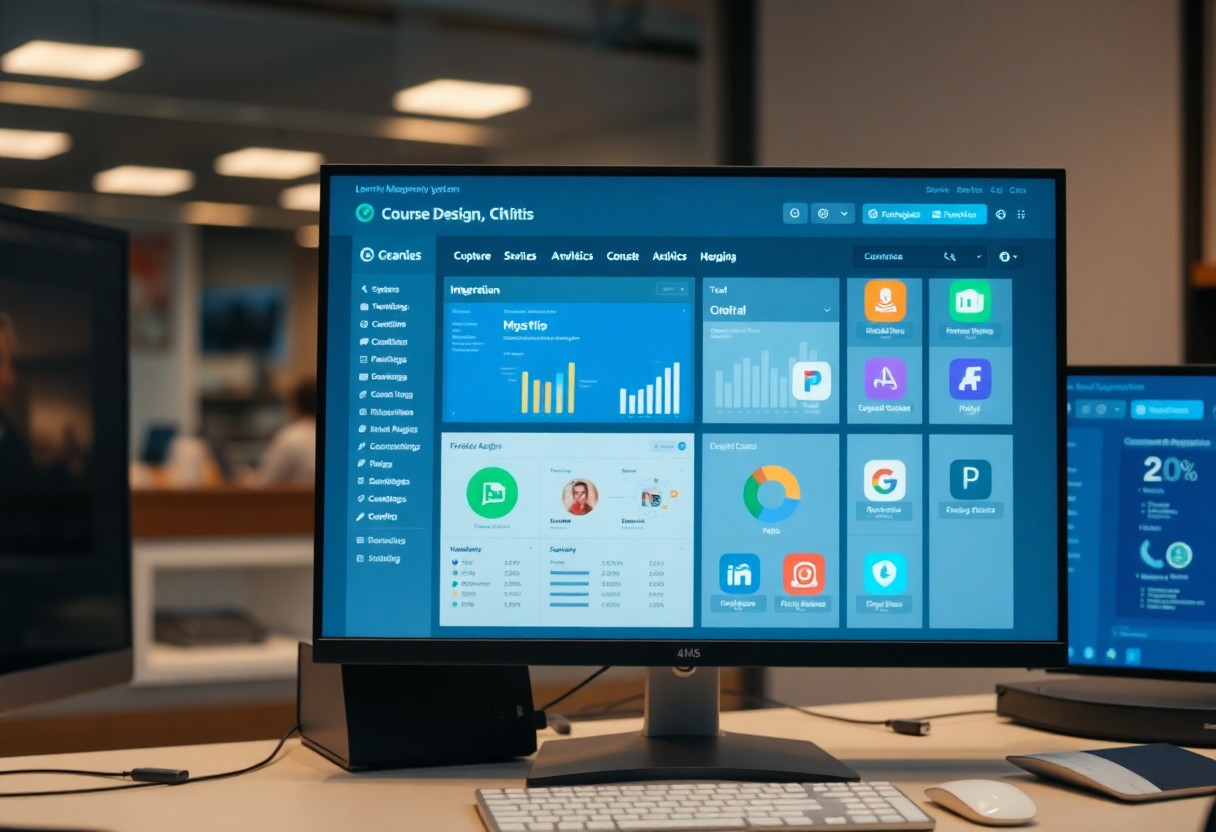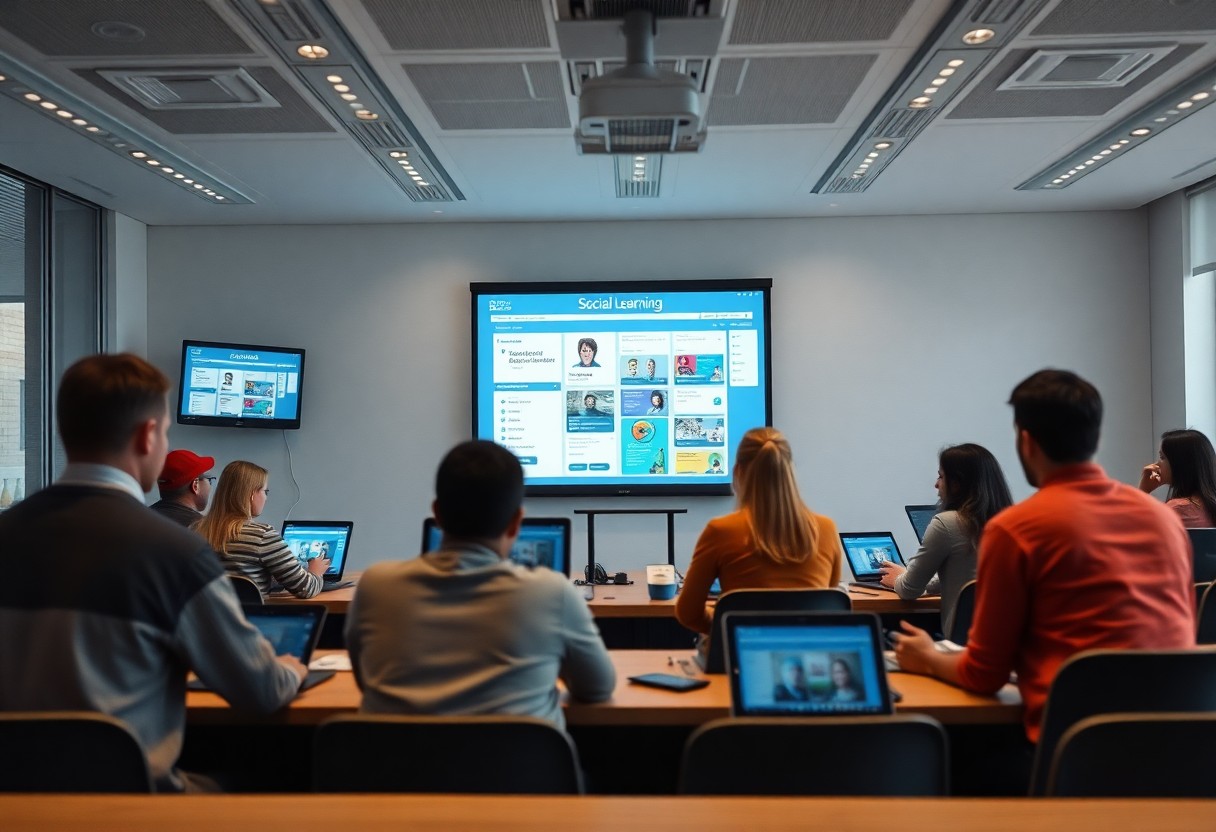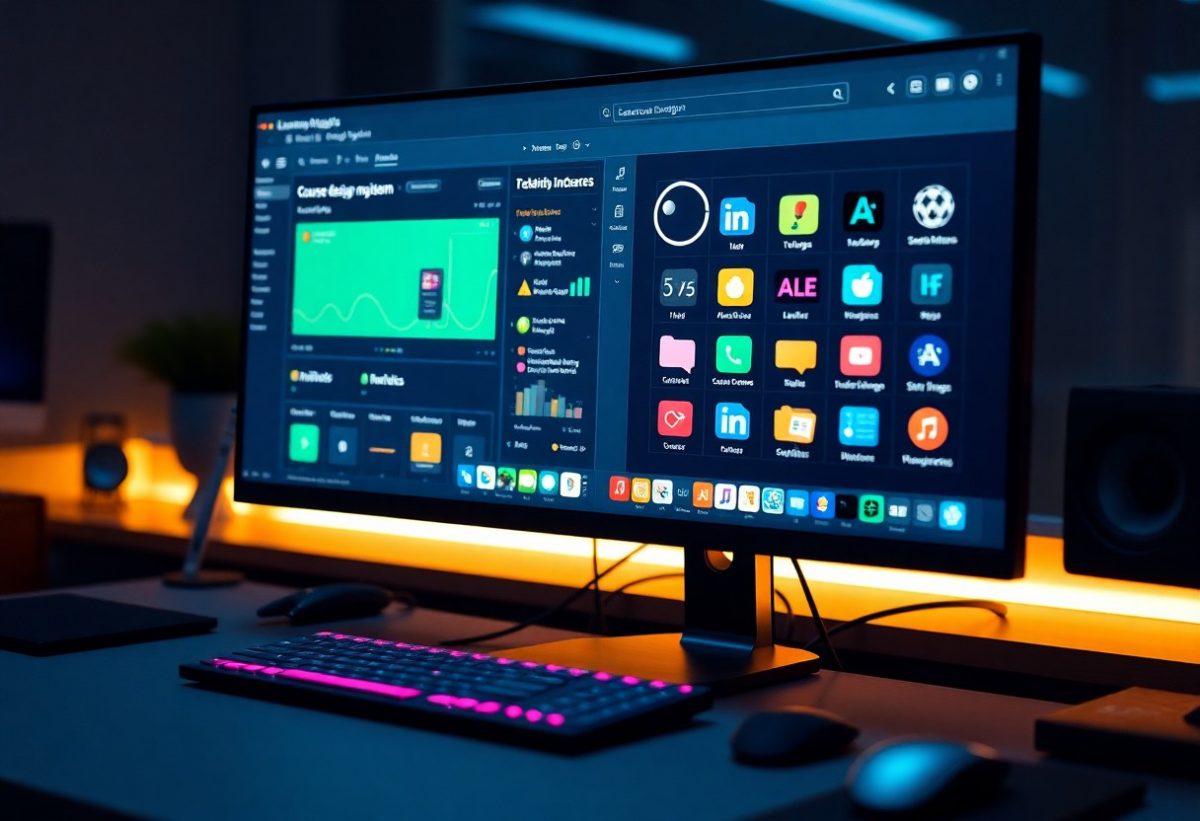Over the past few years, the landscape of online learning has evolved dramatically, making it necessary for you as a course creator to choose a Learning Management System (LMS) that truly meets your needs. The best LMS not only enhances your course development but also enriches the learner experience through innovative features. In this post, you will discover the pioneering functionalities that can help you streamline your teaching process, engage your audience, and ultimately drive better learning outcomes.
The Backbone of Engagement: User-Centric Design
Intuitive Navigation and Interface
Your learners should feel at ease the moment they log into your LMS. An intuitive navigation system streamlines access to course materials, making it easy for users to find what they need without frustration. A well-organized dashboard can highlight important notifications, upcoming deadlines, and even suggested resources, ensuring a seamless experience that promotes learning and engagement.
Personalization Options for Diverse Learners
Tailoring the learning experience to meet individual needs fosters a deeper connection with course material. A robust LMS offers personalization features that adapt content to various learning styles, preferences, and paces. For example, you could enable options that allow learners to choose their preferred visual themes, font sizes, and learning paths based on their existing knowledge or goals.
Customizable learning paths can significantly enhance user engagement by giving each learner control over what and how they learn. According to a study by Towards Maturity, 72% of learners reported being more motivated when they had the ability to dictate their own learning experiences. You might also implement assessments that adjust to the learner’s performance, presenting challenges that keep them engaged without feeling overwhelmed. This personal touch not only boosts user satisfaction but also significantly improves knowledge retention and course completion rates.

The Tech That Transforms: Cutting-Edge Integration Capabilities
Compatibility with Third-Party Tools and Platforms
Your LMS should seamlessly integrate with a variety of third-party tools and platforms that you utilize in your course creation process. This includes important applications for email marketing, social media management, and CRM systems. For instance, an LMS that connects effortlessly with platforms like Mailchimp or Salesforce allows you to manage your workflow and outreach more effectively, leading to a more cohesive teaching and learning experience for your students.
API Accessibility for Custom Functionality
API accessibility empowers you to customize your LMS to suit your unique business needs. APIs (Application Programming Interfaces) facilitate the integration of various functionalities, allowing you to enhance your LMS with tailored features without having to switch to a different system. This can lead to a more efficient learning environment, as you can create specialized tools that cater specifically to your course offerings.
For instance, consider a scenario where you want to automate attendance tracking or integrate a specific assessment tool that your learners are already familiar with. With a robust API, you can develop these custom functionalities to enrich your courses and streamline the learning process. This not only saves you time but also enhances student engagement by providing a more interactive experience. By integrating your LMS with additional resources, you ensure a unified approach that addresses both your needs and those of your learners.

Creating Connections: Social Learning Features
Collaborative Tools and Community Building
Engagement thrives in an environment where learners interact. The best LMS platforms integrate collaborative tools such as discussion forums, group projects, and live chat options, fostering a sense of community among your students. These features not only enhance the learning experience but also encourage networking and knowledge exchange, making your courses more dynamic and engaging.
Peer Assessment and Feedback Mechanisms
Peer assessments empower learners to take an active role in their education by evaluating each other’s work. This mechanism not only provides varied perspectives but also cultivates critical thinking skills and deeper understanding of the course material. With direct feedback from peers, you create a more enriching environment, motivating learners to refine their skills through constructive criticism and collaboration.
Incorporating peer assessment leads to increased learner accountability and active participation in the learning process. Studies show that courses utilizing peer feedback mechanisms can enhance retention rates by up to 50%. By enabling students to view assignments from different angles, you promote engagement and deeper comprehension of the subject matter. Moreover, having simulated ‘real-world’ assessment scenarios prepares your learners for future collaborative and evaluative environments, ensuring they are well-equipped for personal and professional growth.
Measuring Success: Advanced Analytics and Reporting
Effective tracking of learner progress and course performance is necessary to your success as a course creator. A robust Learning Management System (LMS) provides advanced analytics and reporting tools that allow you to extract valuable insights from your programs. Here’s what to look for:
- Real-Time Tracking
- Comprehensive Reporting
- Customizable Dashboards
- Benchmarking Tools
- Data-Driven Decision Making
Types of Analytics
| Type | Description |
|---|---|
| Engagement Metrics | Tracks how learners interact with your content. |
| Completion Rates | Measures how many learners finish your courses. |
| Assessment Performance | Evaluates learners’ understanding through test scores. |
Real-Time Tracking and Insights
Harnessing real-time tracking allows you to assess learner engagement and course effectiveness immediately. You can follow individual progress, such as the time spent on specific modules and completion rates, enabling you to spot potential issues before they escalate. By receiving instant feedback, you can adapt your course content based on how learners respond to different materials.
Predictive Analytics for Future Course Improvements
Predictive analytics equips you with tools to forecast learner behavior and course success. By analyzing patterns from past courses, this feature enables you to implement enhancements and tailor content more effectively for future cohorts. Understanding potential bottlenecks or areas needing improvement helps you pivot quickly, ensuring a quality learning experience.
When you utilize predictive analytics, you can identify trends such as topics with high drop-off rates or low assessment scores. This foresight allows you to modify course elements in real-time—such as adjusting the difficulty of assessments or enhancing engagement through supplementary resources—leading to improved learner retention and satisfaction. Harnessing these insights not only fosters growth for your current curriculum but also informs the design of future offerings, keeping you ahead of the curve in an evolving educational landscape.
Content Diversity in Focus: Multimedia Support
Incorporating Video, Audio, and Interactive Elements
Incorporating various multimedia formats enhances learner engagement and caters to different learning styles. You can use videos for visual storytelling, audio clips for podcasts or narration, and interactive elements like quizzes or clickable infographics. This combination not only vivifies your content but also allows learners to absorb information through channels that resonate with them, making for a richer educational experience.
Adaptive Learning Paths and Responsive Content Design
Adaptive learning paths tailor educational experiences to suit individual learner needs, ensuring that content is relevant and engaging. The best LMS platforms enable you to implement algorithms that analyze user performance and adjust content or assessments accordingly, thereby optimizing the learning journey.
With adaptive learning paths, you can facilitate personalized learning journeys through responsive content design. By leveraging data analytics, you align learning modules with your audience’s pace and preference, providing resources that match their skill levels. For instance, if a learner demonstrates proficiency in a module, the LMS can seamlessly guide them to more advanced topics or offer additional challenges. Conversely, if struggle is detected, it can swiftly redirect to foundational materials or alternative formats, ensuring each learner can thrive at their own pace. This adaptability not only minimizes frustration but also maximizes retention and long-term success. By integrating these features, your courses can meet the diverse needs of all learners.
Scalability and Flexibility for Growing Creators
Customizable Course Structures for Varied Audiences
Your audience is diverse, and so should be your course structures. The best LMS allows you to customize course pathways to cater to different skill levels, interests, and learning preferences. Tailoring your modules ensures that advanced learners can skip introductory content, while newcomers can easily access foundational materials. This flexibility translates to a more inclusive learning environment where all participants find value consistent with their needs.
Mobile Learning and Multi-Device Compatibility
Modern learners expect to engage with content on various devices. An effective LMS must offer seamless mobile learning experiences, allowing you to reach your audience anytime, anywhere. With multi-device compatibility, users can switch between smartphones, tablets, and desktops without losing track of their progress, making your courses more accessible and appealing.
To meet the needs of today’s learners, mobile learning must go beyond mere access; it should include a responsive design that optimizes the user interface across devices. Studies show that over 70% of learners prefer using their smartphones for educational content, highlighting the necessity for features that facilitate offline access and push notifications for updates and reminders. Ensuring a fully immersive and consistent learning experience across devices not only enhances engagement but also increases course completion rates, ultimately benefiting your bottom line and expanding your reach.

Security and Compliance as Cornerstones
Data Privacy and User Security Protocols
Ensuring data privacy and user security is paramount for today’s Learning Management Systems (LMS). With stringent regulations such as GDPR and COPPA in place, a reliable LMS incorporates advanced encryption, multi-factor authentication, and regular security audits to protect sensitive information. By implementing robust user security protocols, you can build trust with your learners, knowing their data is in safe hands.
Adhering to Educational Standards and Regulations
Compliance with educational standards and regulations not only safeguards institutions but also enhances the credibility of your courses. An LMS that aligns with standards like SCORM and xAPI enables seamless content delivery and tracking across platforms, ensuring a consistent learning experience. This compliance guarantees that you are offering a quality educational product that meets stakeholders’ expectations.
Adhering to standards such as the Accreditation Board for Engineering and Technology (ABET) can also make a notable difference. For example, institutions seeking accreditation must align their curriculum with specific learning outcomes and assessments. A compliant LMS facilitates this alignment through features like course mapping tools, ensuring you can articulate how your courses meet necessary criteria. The seamless integration of these standards enhances the overall educational experience, providing a structured learning path while meeting regulatory demands.
To wrap up
Taking this into account, the best LMS for today’s course creators should offer user-friendly design, robust customization options, and comprehensive analytics. You need tools that foster engagement and support diverse learning styles while integrating seamlessly with other platforms. Understanding your audience and incorporating feedback mechanisms will help enhance your course offerings. Ultimately, choosing an LMS that aligns with your objectives will empower you to create impactful online learning experiences.
FAQ
Q: What are the important features that modern LMS platforms should offer for effective course creation?
A: The best Learning Management Systems (LMS) for today’s course creators should include intuitive course design tools, customizable templates, and multimedia support. These features allow creators to seamlessly integrate videos, images, and interactive content into their courses. Additionally, a robust assessment system, including quizzes and assignments, enables creators to gauge learner progress. Analytics and reporting tools are also vital for tracking student engagement and performance, ensuring that course creators can refine their content based on real data.
Q: How does gamification in LMS enhance the learning experience for users?
A: Gamification features in an LMS can significantly boost user engagement by integrating elements such as points, badges, and leaderboards. These features encourage learners to complete modules and participate in activities by making the learning process more fun and competitive. Gamification not only motivates learners to pursue their educational goals, but it also fosters a sense of community and collaboration among participants. By incorporating game-like dynamics, course creators can create a more interactive and enjoyable learning environment.
Q: Why is mobile compatibility important in an LMS for today’s learners?
A: Mobile compatibility is vital because it allows learners to access course materials anytime and anywhere, accommodating diverse learning preferences and busy schedules. As many users rely on smartphones and tablets for online activities, an LMS that offers a responsive design or a dedicated mobile app ensures that learners can easily engage with content on their preferred devices. This flexibility supports continuous learning, as users can participate in lessons during commute times or while on the go, ultimately enhancing their overall educational experience.

